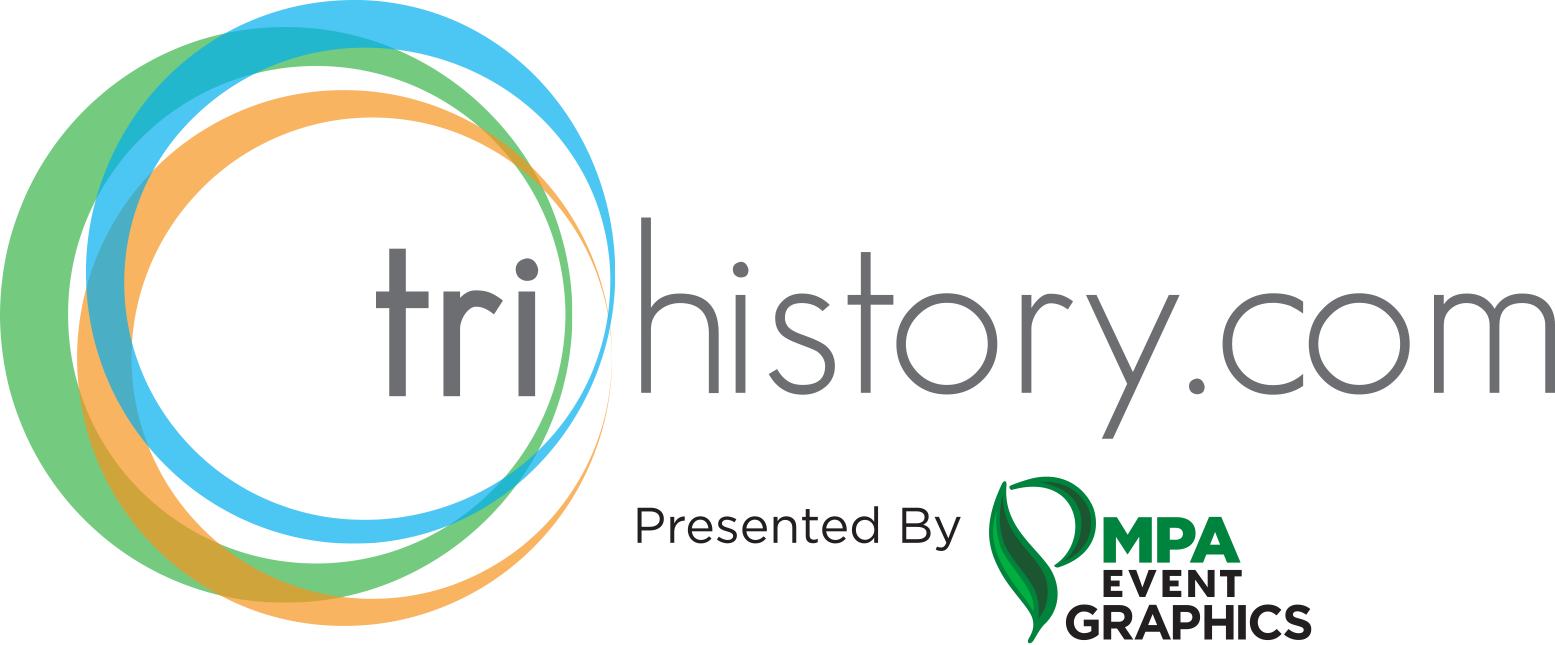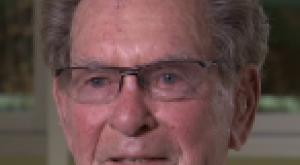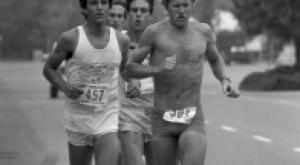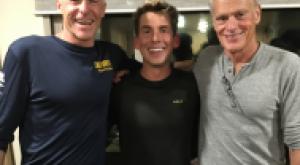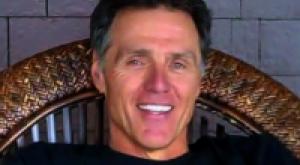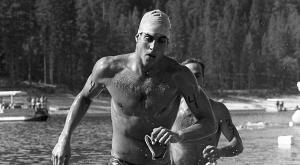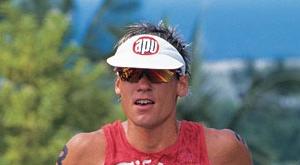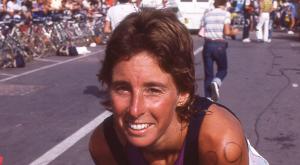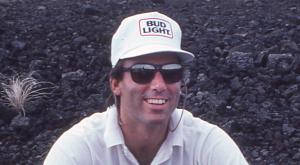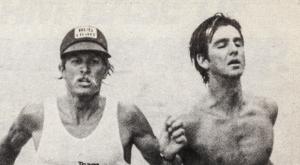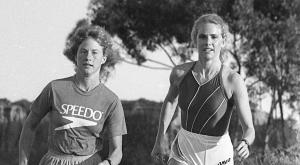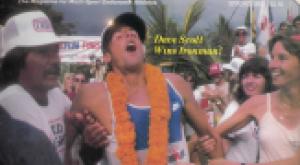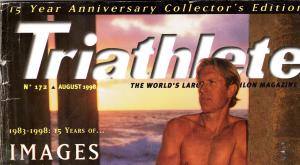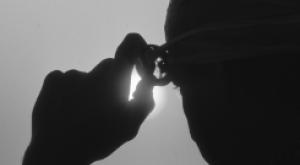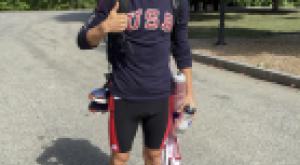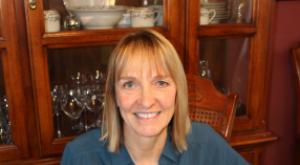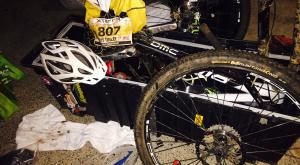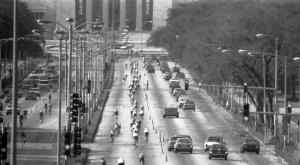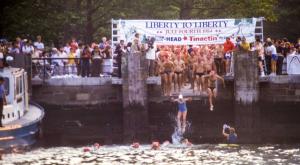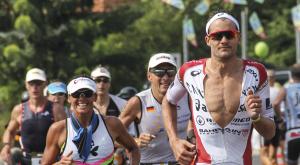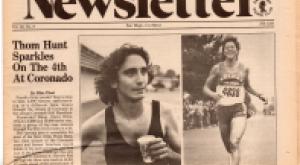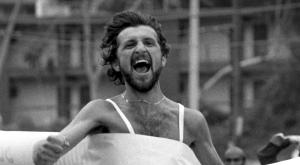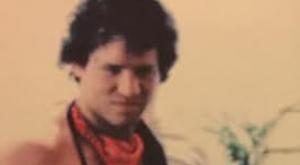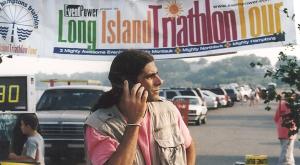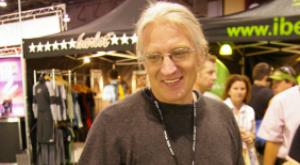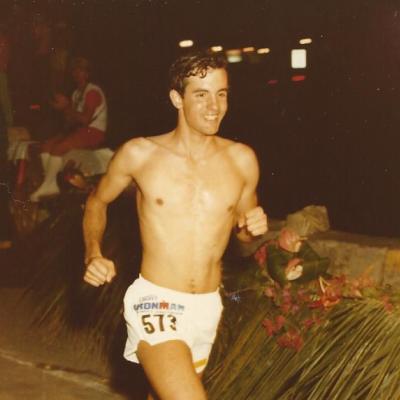What? That title is probably going to seem backwards to most of you. Actually, the title should read, "My Journey from Swimmer to Ironman to Triathlete," but more on that in a moment. In the early days of the sport, there really weren't a lot of races. So, you didn't become a triathlete by first competing in, perhaps, a sprint and then an Olympic-distance, followed by a 70.3, and then, finally, maybe after several years or more in the sport, an Ironman. No, you competed almost immediately in the Ironman. And, not just any Ironman, but the Hawaii Ironman, which was the only Ironman around. My second triathlon was the February 1982 Ironman in Kona. For others I knew, the Hawaii Ironman was their very first triathlon.
I was a competitive swimmer in high school and for a year at UCLA as a walk-on. Even off the team, I swam four to five times a week in college. My first foray into running came when I was in college as well. I competed in the intramural cross-country races and ran my first 10k. But, during my senior year at UCLA, in early 1980, I read an article in The Los Angeles Times about an ophthalmologist in Santa Monica who competed in an event called the "Iron Man Triathlon" on the island of Oahu. The distances were incomprehensible – 2.4-mile swim, a 112-mile bike, followed by a marathon run. Even so, I was intrigued. I began thinking about what it would take for me to compete in a future race. On race day itself, I would, of course, stop for lunch during the bike; maybe take a short nap before continuing...
The article in The Times said that the event was going to be televised later that spring on ABC's "Wide World of Sports." I kept an eye out for the coverage and recorded it on my parents' VCR when it aired. I watched that tape more times than I would like to admit. I showed it to my friends to try to get them interested in joining me in this madness. They humored me, but most thought I had lost it. I was hooked, though. Dave Scott, the 1980 winner, became my hero. I knew I would race the Ironman. The problem, I was still a poor college student. Before the day of Ironman race aid stations, competitors were required to have a support team for the event. I couldn't even afford to get myself to Hawaii, let alone a support team.
The 1981 race moved to Kona to accommodate 326 participants, a three-fold increase from the previous year. I was encouraged by the elimination of support crews in favor of aid stations when I watched the coverage of John Howard's win on "Wide World of Sports." With the addition of the tape of the 1981 coverage, the 1980 videotape was happy to no longer bear the entire brunt of my endless viewing. It was May 1981. I was out of college now, had a job, a little money, and was swimming Masters. I set my sights on the next Ironman, which would be held on February 6, 1982. Hmm, so how do you train for this event? There were no triathlon books, magazines, or coaches. I didn't even know anyone who had done the race. No matter, I started training. I dusted off my steel Huffy 10-speed bike, purchased for $69 from K-Mart when I was in high school. The thing was a bright orange tank and was too small for me to boot. Nevertheless, I embarked on my first multi-sport workout – an 8-mile bike followed by a 2-mile run. Sure, that would do it! Of course, the "brick" name for such a workout would not be used until years later. I remember going on a "long" ride of 22 miles and completely bonking. I got so tired, I actually had to get off and walk for awhile. Maybe this wasn't going to be as easy as I thought.
I did my first rough water swim. My first practice ocean swim was a short swim off Ventura beach. I remember being scared to death when I saw something white shoot below me. Was that a shark? Well, no, it was actually my arm. In the summer of 1981, I did the Huntington Beach Pier-to-Pier Swim (2-miles) and Tug's Swim-Run-Swim in San Diego, one of the only multi-sport events around. Toward the end of the summer, I learned that there was going to be a triathlon of almost half the Ironman distance in Santa Barbara in October. I sent in my entry, as this was the only other local triathlon competition I had heard of that summer. By now, it was clear that my 50-pound, orange Huffy was not going to cut it. I borrowed my former roommate's sister's 10-speed for Santa Barbara. Racing on a rainy day, I completed the .9-mile swim, 53-mile bike, and 13.1-mile run in 6:43:42. Out of the water in 11th, I ended up finishing 113 out of 175 finishers, way behind men's winner Scott Tinley and well behind women's winner Kathleen McCartney, as well. The same duo would go on to win in Kona in February.
Knowing I could not hold onto my friend's sister's bike through February, I decided it was time to replace the Huffy. My entry level job after college did not afford a big budget, especially with a Hawaii trip looming on the horizon. I decided to approach local bike shops to see if they might "sponsor" me by giving me a deal on a new bike. But first, I needed a hook. I spoke with the folks at Swim Swim, a publication which covered Masters and rough-water swimming, about me writing an article about my adventures in the Ironman. The publishers, Michael Gilmore, Harald Johnson, and Penny Little, who would debut Triathlon in the spring of 1983, gave me the assignment. With the promise of a mention of the bike shop in my Swim Swim article, Bikecology in Santa Monica gave me a deal on a $389 Niko 10-speed and some biking apparel. The manager also forced me to get real bike shoes, with cleats. Yikes! A few falls later, I was getting the hang of riding with cleats and stylin' in my Bell touring helmet and black wool biking shorts. My longest ride ever prior to Kona? 87-miles. My longest run ever prior to Kona? 16-miles. Ready or not, here I come.
My second triathlon began in Kailua bay on February 6, 1982. The details of my race can be found in the Swim Swim article I wrote (Click on the PDF link below to read the complete original article -- Ed.), which appeared in the summer 1982 issue. I'll spoil the ending by letting you know that I finished in 360th place (out of 541 finishers) in a time of 14:33:35. But, something much more meaningful than becoming an Ironman finisher happened that week in Kona; I changed sports. I went into Kona thinking that the Ironman would be an once-in-a-lifetime experience. I was a competitive swimmer who had trained for a one-time shot at racing the Ironman. There were few in those days who called themselves triathletes. Most competitors considered themselves a swimmer, a biker, or a runner. The TV commentators on "Wide World of Sports" would talk about which type of athlete had the advantage in the Ironman, the swimmers, who would jump out to the early lead, or the bikers, who enjoyed the longest leg of the race, or the runners, who would close in the final stage. Heck, the original debate that spawned the idea of the Ironman in 1977 was about who was the superior athlete – swimmer, biker, or runner, right? John Howard had declared after his victory in 1981 that his win showed that bikers were superior. But, Scott Tinley, in accepting his trophy at the awards ceremony the night after the February 1982 race, alluded to John Howard's comments the year before and said, "With ten people under 10:30 and 541 finishers, I think it proves that triathletes are the best conditioned athletes in the world." I wrote that down in my race journal that night. And, from that day on, I was a triathlete.
About the author
Mark has competed in close to 100 triathlons, including five Ironman races (Kona in Feb. 1982, Oct. 1982, and 1983, and Ironman Canada twice). He founded the National Triathlon Training Camp (NTTC), the world's first triathlon camp, in November of 1982 and was director of Team NTTC, a team which sponsored some of the top pros in the sport.
